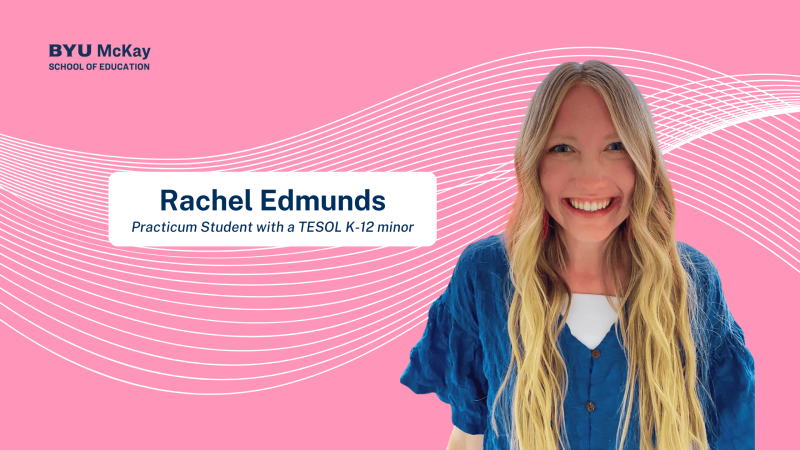
During Rachel Edmunds’ final transfer as a missionary in Salem, Oregon, her mission president gave her a unique assignment. Although she only spoke English, she was assigned to serve in a Spanish-speaking area during her last six weeks—six weeks to learn how to teach the gospel in a language she did not speak.
“It was during those moments of frustration when I couldn’t speak what I was feeling when we were teaching someone who only spoke Spanish, I’d have these thoughts or feelings that I wanted to share,” she says. “Looking back, I can see how everything is leading me up to my career and what I think God wants me to do.”
This experience contributed to Edmunds’ decision to minor in Teaching English as a Second or Other Language (TESOL K-12). After her mission, Edmunds started at BYU knowing she wanted to be an elementary school teacher. During a class on multicultural education, she learned more about issues facing students of different language backgrounds, and she knew she wanted to make learning accessible for all her future students.
“I felt like if I took TESOL classes, I could learn about more resources to best help my students who speak a home language or a language that is different than English,” she explains. “I felt super passionate about making an inclusive space for everyone in my class.”
Throughout the TESOL K-12 classes, students learn different ways to try and include students who do not speak English. One theorist from whom Edmunds has drawn inspiration is Ofelia Garcia, who developed the theory of translanguaging, utilizing various linguistic repertoires in learning. Edmunds explained that translanguaging is the process of allowing non-English speaking students to use their home language in the classroom by focusing on content, rather than language.
“By using that theory in the classroom, it allows the teacher to give more autonomy to the students, and allows them to make meaning in any language,” Edmunds says. “Translanguaging builds a bridge that allows students to use their entire language resources, because language is about making meaning with more than words.”
As a teacher, Edmunds hopes to use translanguaging to engage students of various language backgrounds in focusing on content while learning a new language. The content focus can, Edmunds believes, build relationships with students and their families by supplementing the development of a student’s home language with English at school. She also plans to engage with faculty and staff to support English-learning students.
“One idea that I have is to offer beginning Spanish classes for the faculty and staff I work with after school, if that’s a language that’s spoken in my school,” she says.
Edmunds believes the TESOL K-12 program helped her become more aware of social issues, racism, and other injustices. She hopes teachers can integrate the principles taught in the program to help multicultural students learn and grow in traditional classrooms.
“We need teachers, but even more so, we need teachers who know how to include and who know how to help their language minority students,” she says.
Writer: Stacia O'Leary
Media Contact: Andrew Devey